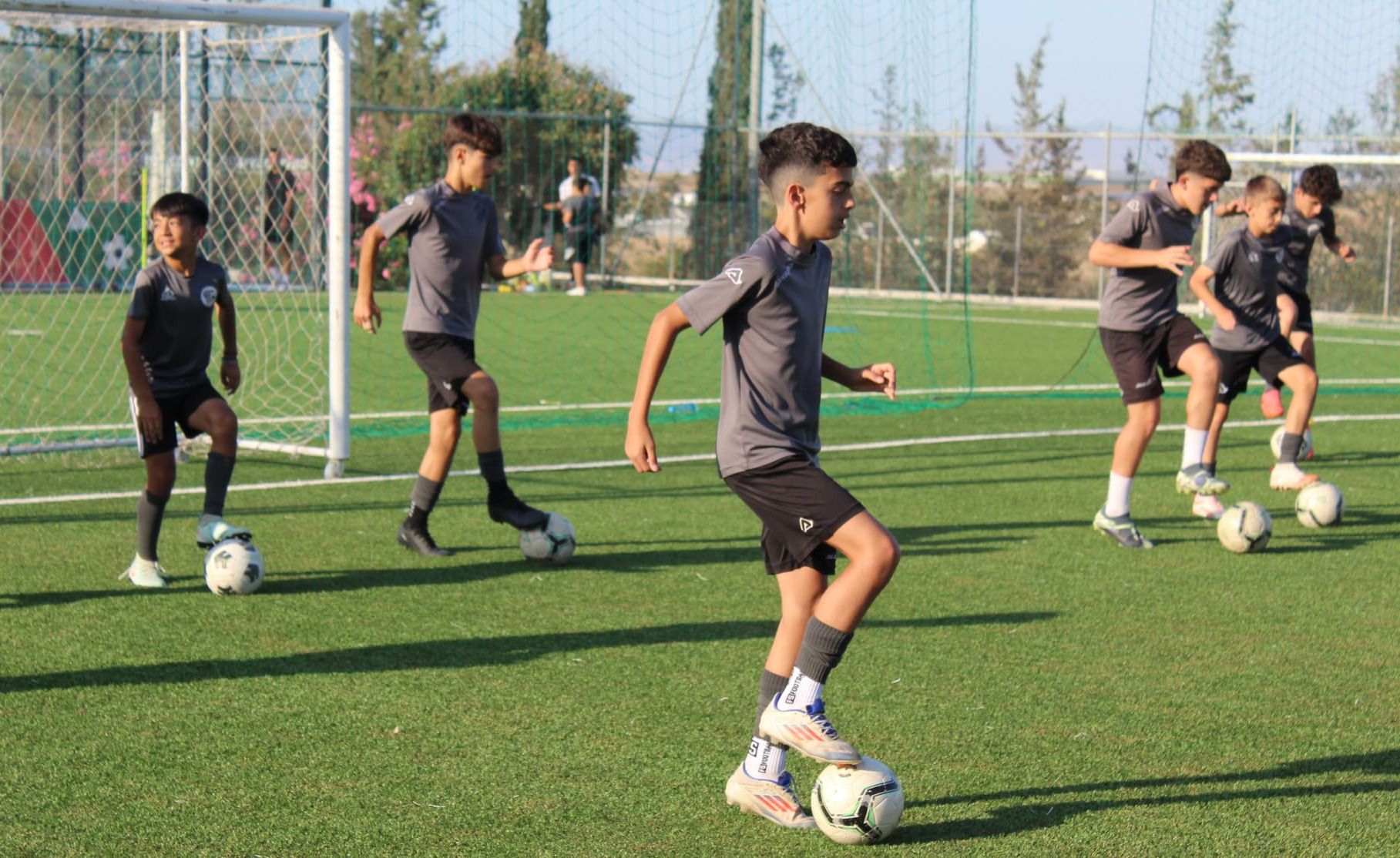Preparation Phase | 10-12 year olds

This is a great age-group for small-sided games. In fact there is an argument to suggest that the entire session should be small-sided games. After all, we want the children to learn to play football - so what better way to learn than by playing football?
The challenge for the coach is to maximize the amount of learning that happens for all players in these small-sided games. A large part of this will be how to group players so they all experience success. It is worth remembering that team sizes do not need to be even - being outnumbered in games is realistic preparation for the adult game of football, and poses a new problem to the children.
There are hundreds of modifications to small-sided games - all of which will change the challenge that the children face. The coach needs to ask themselves: What does this modification add to the learning process? If there is no benefit, then there is no use in modifying the game.
Football Training Session Plan
Age Group: 10–12 years old
Period: Special Preparation Period
Ball Size: No. 4
Field Size: 50m x 70m (Max format: 8v8)
Training Focus Breakdown
Technical Training – 50%
- Individual Technique (30%)
- Ball mastery under pressure (dribbling, passing, shooting, receiving)
- 1v1 attacking and defending
- Change of direction and feints
- Group Technique (20%)
- Passing combinations (wall passes, overlaps)
- Support play and movement off the ball
- Exercises that encourage decision-making in small groups
✔ Focus: Skill execution under passive, semi-active, and active defensive pressure to simulate match conditions.
Tactical Training – 30%
- Individual Tactics (20%)
- Decision-making: when to pass, shoot, or dribble
- Defensive positioning and marking
- Spatial awareness and anticipation
- Team Tactics (10%)
- Basic attacking and defending principles (width, depth, balance)
- Team shape in attack and defense (in game formats)
- Transition play (attack to defense and vice versa)
✔ Focus: Tactical understanding through game formats and scenario-based learning.
Physical Conditioning – 20%
- Components Covered:
- Speed & agility
- Flexibility & elasticity
- Rhythm & balance
- Neuron-muscular coordination
- Basic endurance (for age 12 only)
- Methods:
- Circuit training (with technique or strength focus)
- Strength exercises using body weight only (e.g., squats, lunges, core stability)
- Dynamic movement exercises with and without the ball
Game Formats and Match Simulation
- Small-sided games:
- 4v4, 5v5, 6v6 – high ball contact, quick decision-making
- Progression up to 7v7 and 8v8 (on 50x70m field)
- Game principles emphasized:
- Spacing, support, compactness, pressure, recovery
Session Goals
- Reinforce love for the game while introducing structured learning
- Foster individual creativity within team concepts
- Gradually prepare players for more complex tactics and increased physical demands


